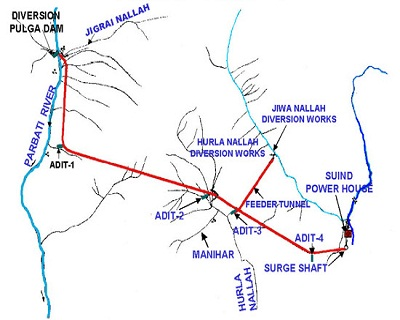Description
Disclaimer: Copyright infringement not intended.
Context:
According to the United States Geological Survey, 10 earthquakes of at least magnitude 6 have occurred in the area impacted over the past century.
An earthquake measuring around 7 on the Richter scale hit Tibet, killing around 100 people and damaging about 1,000 houses. The epicentre was in Shigatse city of Tibet, 93 km northeast of Lobuche in Nepal.
What are the causes of most earthquakes in Tibet and the Himalayan region?
The Himalayas remain one of the most geologically active regions of the world with a history of significant earthquakes. The Himalayan region falls primarily in Seismic Zone IV and Seismic Zone V on the Seismic Zone Map of India prepared by the Bureau of Indian Standards. It classifies India into 4 zones – V, IV, III and II. Zone V is the most seismically active area, while Zone II is the least.
- The Himalayas lie at the convergent boundary of the Indian and Eurasian plates, where the Indian plate subducts beneath the Eurasian plate, creating enormous pressure that is released as earthquakes.
- Numerous fault systems, such as the Main Central Thrust and the Main Boundary Thrust, where sudden slip or movement along these faults causes earthquakes.
- The Himalayas are geologically young and structurally unstable, which amplifies seismic activity.
Consequences of an earthquake in the Himalayas
- Landslides and Avalanches: Steep terrain exacerbates landslides, leading to significant damage to infrastructure and loss of life.
- Glacial Lake Outburst Floods (GLOFs): Earthquakes can destabilize glacial lakes, leading to catastrophic flooding.
- Tectonic Rises and Faults: Sudden elevation changes affect ecosystems, human settlements, etc.
- Loss of culture and heritage: The region has ancient monasteries, temples, and cultural monuments.
Collision of tectonic plates
- The collision of the Indian plate and the Eurasian plate causes high seismic activity in the area.
- The Indian plate moves in a northerly direction and collides with the Eurasian plate, creating geological stress.
- This stress is ultimately felt on the Earth's surface in the form of earthquakes. This collision also gives rise to the high mountain ranges of the Himalayas, making the region highly vulnerable to earthquakes.
Fault lines
- There are several major fault lines in this region, such as the Dhaulagiri fault and the Indus-Ganga fault, which can become epicenters of earthquakes.
- These fault lines absorb the stress created when the plates collide, and when that stress is suddenly released, an earthquake occurs.
- Driven Friction and Plate Motion: The friction between the Indian plate and the Eurasian plate and the movement between them causes an increasing state of stress. When this stress reaches a limit, it is released to the earth's surface in the form of an earthquake.
Geological activity of the Himalayan region
- The presence of the Himalayan Mountain range also makes the area prone to earthquakes as the area is constantly in the process of geological movement and construction.
- Seismic movements also occur when mountains and valleys form here.
Frequency of earthquakes in history
- According to the United States Geological Survey, the area has seen several earthquakes of magnitude 6 or greater in the past few decades.
- This regular seismic activity indicates that the area is an active seismic zone.
Seismic impact of Mount Everest and surroundings
- Mount Everest and its surroundings, which are part of the Himalayas, are extremely sensitive from a seismic point of view because the region is located at the interface of the Indian and Eurasian plates.
Future earthquake hazard
- The Western Himalayas are one of the most dangerous seismic regions in the world.
- Scientists have long said that a large area stretching 2,500 kilometers from the Hindu Kush to Arunachal Pradesh is at risk of a large magnitude 8 earthquake.
- The constant interaction of tectonic plates causes a lot of energy to be stored along fault lines - which can only be released in the form of a large earthquake.
CASE STUDY: A 2017 study ("Implications for Elastic Energy Storage in the Himalayas of the 2015 Gorkha Earthquake and Other Incomplete Ruptures of the Main Himalayan Thrust") published in Quaternary International found that only two Himalayan earthquakes have ruptured at the surface in the past 500 years.
Way forward
- Ensuring that infrastructure is designed to withstand strong earthquakes.
- Encouraging Himalayan Countries to Share Knowledge, Resources, and Technologies for Earthquake Preparedness and Recovery.
- Early warning system development, raising awareness of safety protocols during and after earthquakes, research and risk mapping, etc.
READ ABOUT
EARTHQUAKES
2004 Indian Ocean Earthquake & Tsunami
Source:
Down to Earth
Indian Express
|
PRACTICE QUESTION
Q.The Himalayan region is one of the most seismically active zones in the world. Analyze the key geological and tectonic factors contributing to its seismic activity. Discuss the implications of this seismic activity for the region's infrastructure, population and disaster preparedness. (250 words)
|















